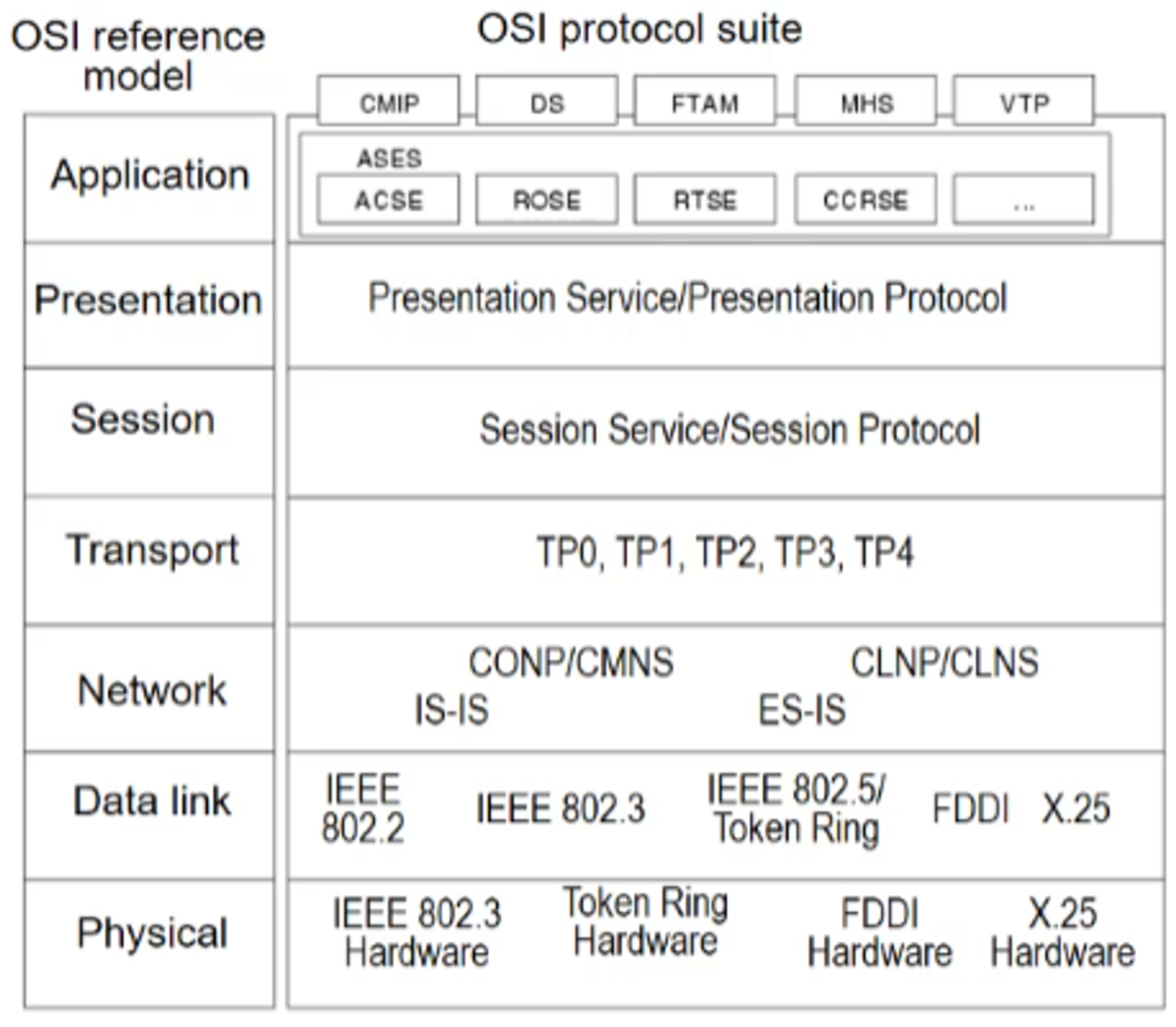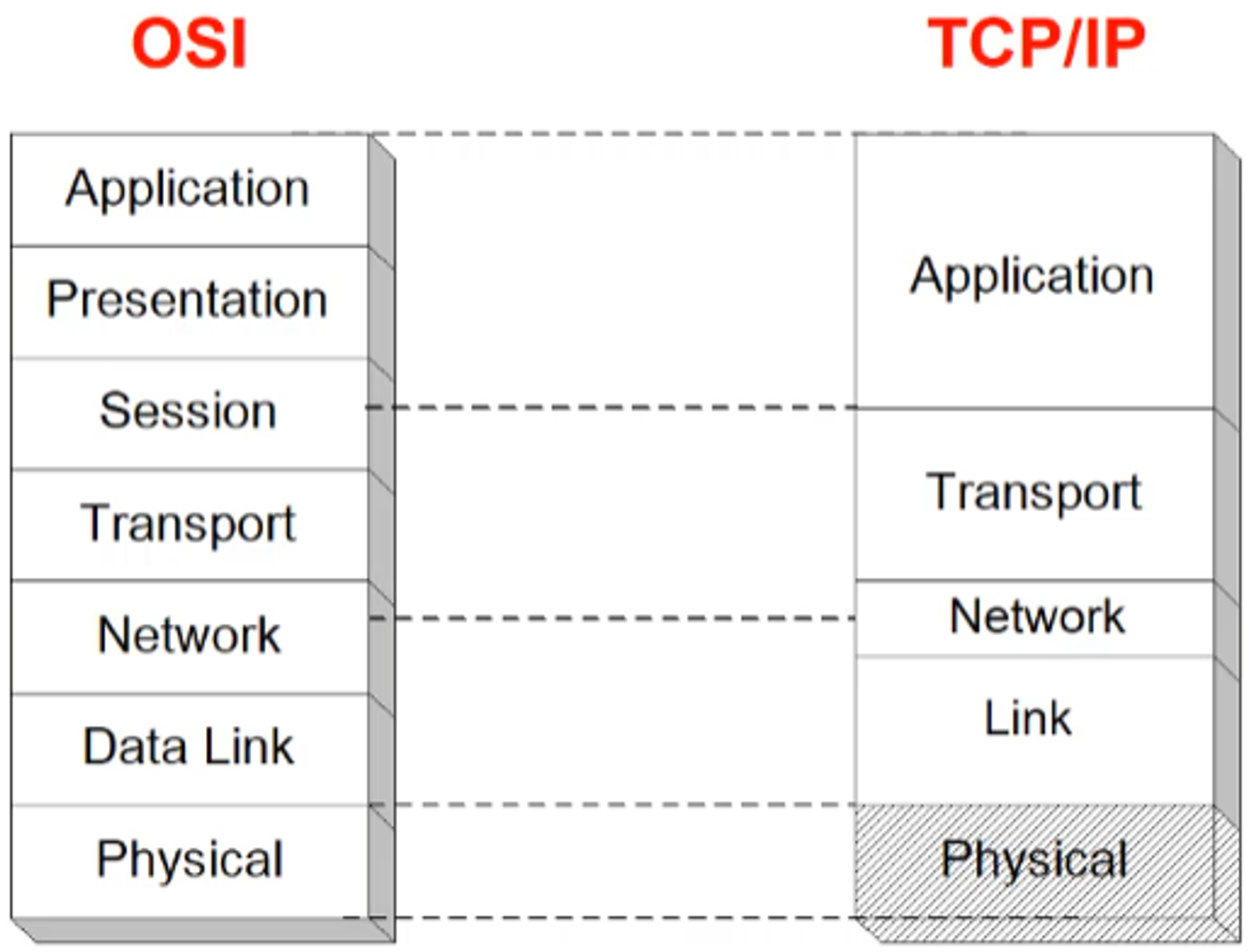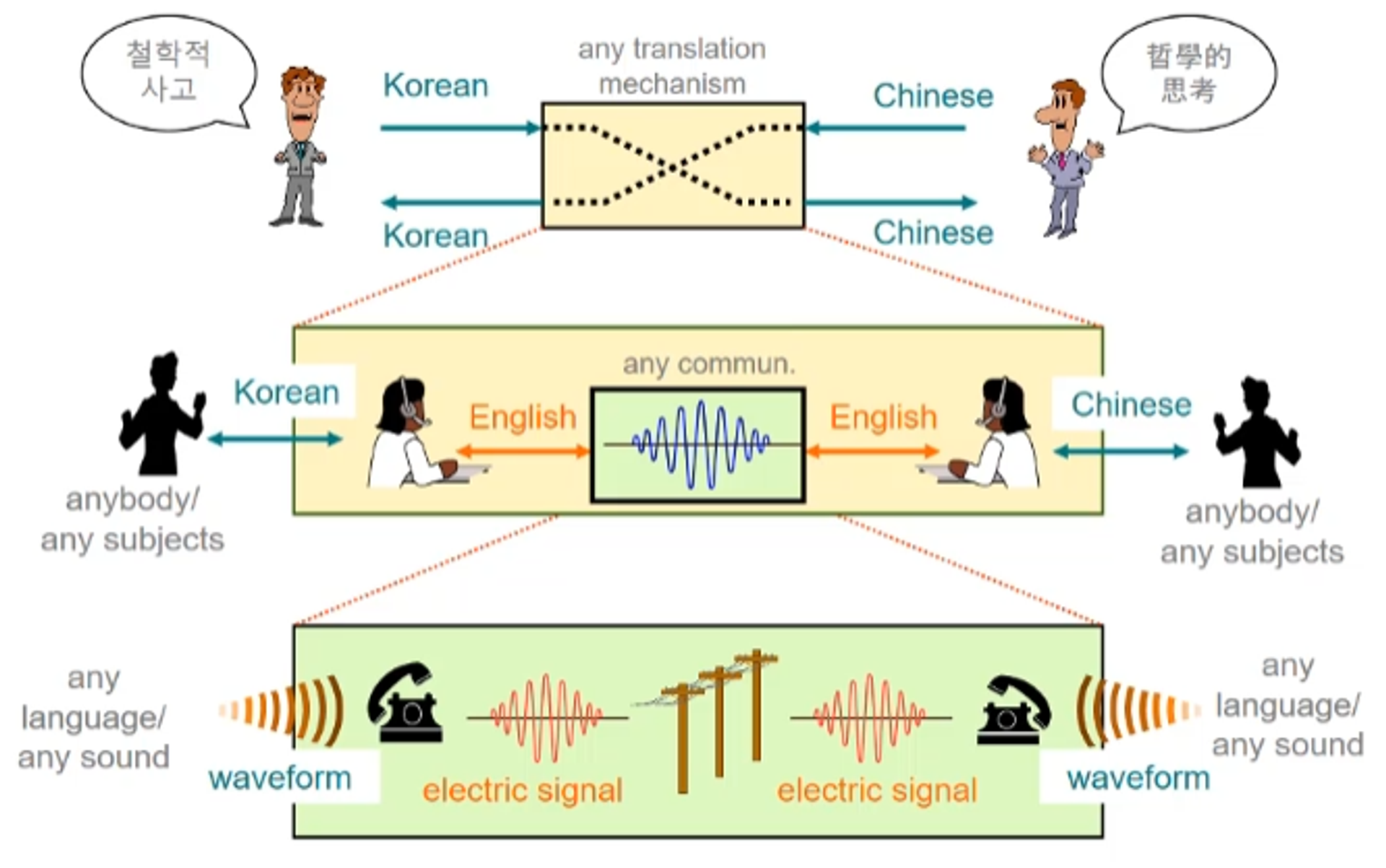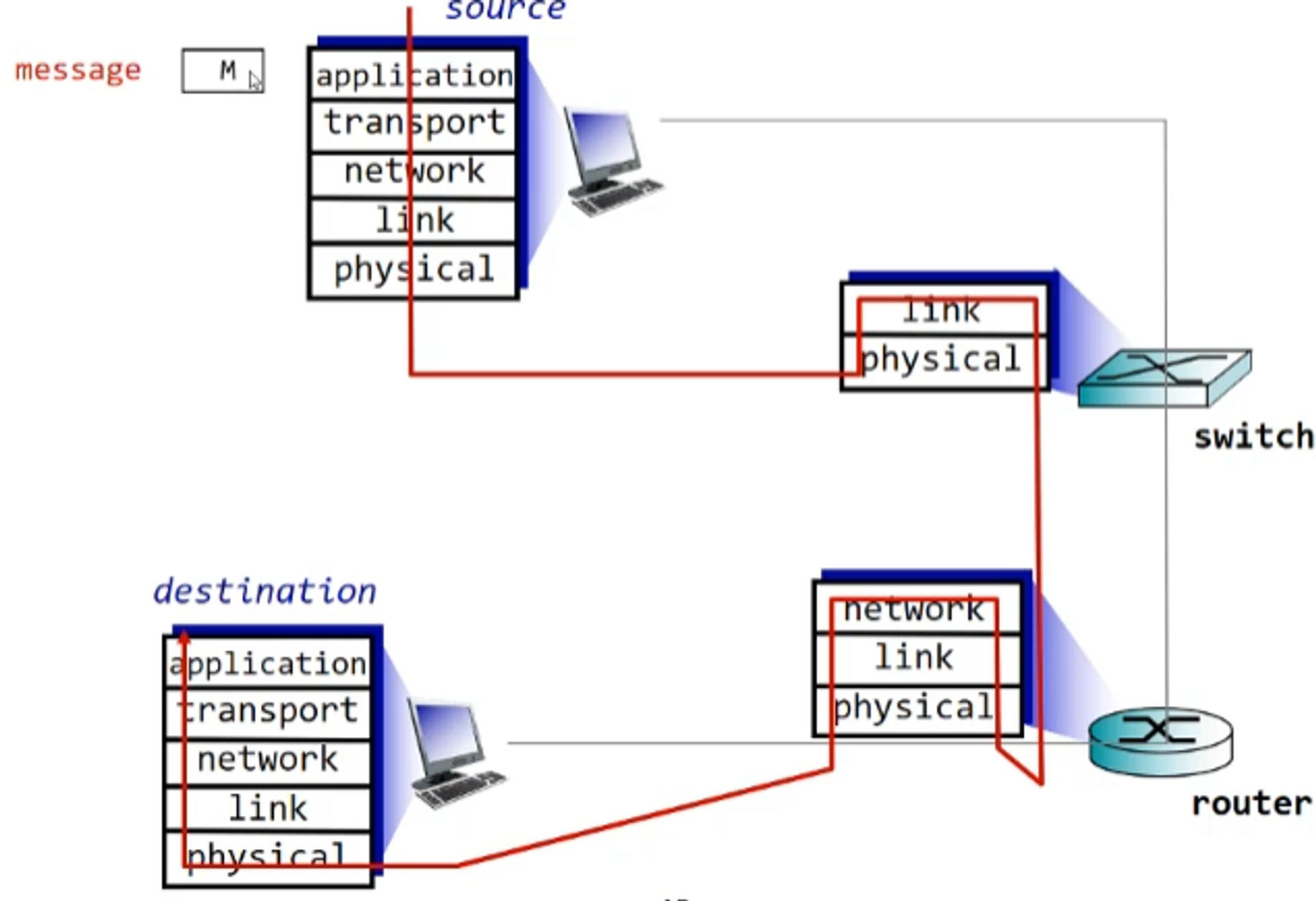
Internet protocol stack
Application : supporting network application e.g. FTP, SMTP, HTTP
서비스가 실현되기 위해 client와 server간에 어떠한 데이터를 보낼 것인지 정함
Transport : process-process data transfer e.g. TCP, UDP
end to end로 잘 전송되게끔 하는 것
Network : routing of datagrams from source to destination e.g. IP, routing protocols
link들이 모여서 network가 됨
Link : data transfer between neighboring network elements e.g. Ethernet, 802.11 (WiFi), PPP
각각의 router들 사이에 link가 존재
Physical : bits “on the wire”
ISO/OSI reference model (모범답안)
Presentation : allow applications to interpret meaning of data
e.g. eencryption, compression, machine-specific conventions
Session : synchronization, checkpointing, recovery of data exchange

Comparison of OSI and TCP/IP Protocol ARchitecture

application : DNS, HTTP, SMTP, FTP, POP, BitTorrent, DHT
transport : UDP, TCP, SCTP, DCCP
network : RIP, OSPF, BGP, PIM-SM, DVMRP, ICMP, IGMP, IPv4, IPv6, DHCP
link : ARP, Ethernet, IEEE 802.11
Why Layering - Example

Encapsulation

Segment : Ht | Message → transport
Datagram : Hn | Ht | Message→ network
Frame : Hl | Hn | Ht | Message → link
- H : Header
Quiz
Protocol stack에서 layer의 순서가 중요한가? 중요하다면 왜 중요한지, 중요하지 않다면 왜 중요하지 않은지 기술하시오.
-
Internet protocol stack과 OSI reference model과의 차이가 무엇인가?
OSI는 실제로 서비스가 돌아가는 걸 만듦
Internet stack “missing” these layers
if needed, must be implemented in application
-
Protocol들이 계층적 관계를 갖고 있어서 가질 수 있는 장점은 무엇인가?
각각의 layer에 있는 기능들을 독립적으로 구현, 중복된건 역할분담
-
Protocol들이 계층적 관계를 갖고 있어서 초래되는 한계는 무엇인가?
불필요한 기능을 이용해야 할 경우 발생
overhead 증가
